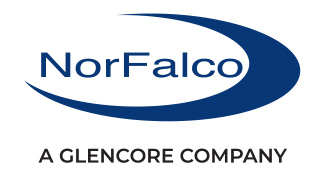Handling tank cars
Prior to Discharge
Prior to discharge, the brakes should be set, and the wheels of tank cars chocked on both sides of the wheel to prevent motion in either direction. Blue warning flags and derails for tank cars should be placed at least 1.5 car lengths away.
Before unloading, contents should be identified and the quantity verified and compared to the available storage capacity. All caution markings on containers should be observed.
Placards must indicate U.N. No.1830 for sulfuric acid, and 1832 for spent acid. Tank cars when received will frequently be under pressure because of thermal expansion of the acid or slow hydrogen generation. The pressure in the tank car must first be released by carefully and slowly removing the one-inch plug from the safety vent and by slowly opening the one-inch pressure release valve. Only then can the fill hole cover be opened as a final check to ensure car is depressurized.
However, since sulfates may have blocked the pressure release valve, care should be taken when opening the fill hole cover, since the car may still be pressurized.
It is not recommended to vent through the fill hole, use the one-inch pressure valve first.
Top Unloading
A hydrogen-enriched atmosphere can develop in the dome of tank cars that have been in transit for long periods, particularly in hot weather. It is good practice to vent the gas space with the cover open for 15 minutes before sampling, to avoid having a stray static spark trigger an explosion.
After the tank car has been completely depressurized and the fill hole cover opened, the cap on the eduction pipe can be removed. This should be done carefully and slowly since some residual air may be trapped in the pipe.
Under no circumstances should the cap be removed from the eduction pipe before the pressure in the tank car or truck has been released and verified. The acid discharge hose must always be connected before the air piping is connected to the tank car or truck.
A rubber hose must never be used for acid discharge. A Teflon®-lined hose, with abrasion resistant outer covering, is generally accepted for use. Detailed information on discharge hose specifications and hose inspection procedures is available on request.
Top unloading may be implemented by using either an appropriate pump, or by applying air pressure to the car. Recommendations on appropriate pump types and sizes are available from NorFalco upon request.
After Discharge
Allow sufficient time for acid to drain from the discharge line. Care should be taken to prevent pools from accumulating in low spots before the discharge line is disconnected. Replace all valves, plugs and caps, and secure the cover.
We recommend use of Viton B® gaskets in sulfuric acid service. When using Viton B® gaskets, it is important that they meet specific quality standards.
After discharge, a small amount of product residue remains in the tank car. As a result, "Full Load" 1830 placards will remain displayed for the empty return of the car to the shipper. If the tank car cannot be completely discharged, call NorFalco promptly. Remove wheel chocks and derails.
Notify the shipper if any object has dropped into the tank car or truck.
"Residue" cars still contain some product and must be tightly closed and secured, just like a loaded car.
For more comprehensive guidance on the safe unloading of sulfuric acid tank cars and trucks, please refer to the NorFalco Inc. Sulfuric Acid Safety Series Video which contains "The Professional Approach to Personal Safety, Tank Car Unloading and Truck Unloading."
-
More information
For more information, please see Offloading Using Air. Click on the link below.View more
